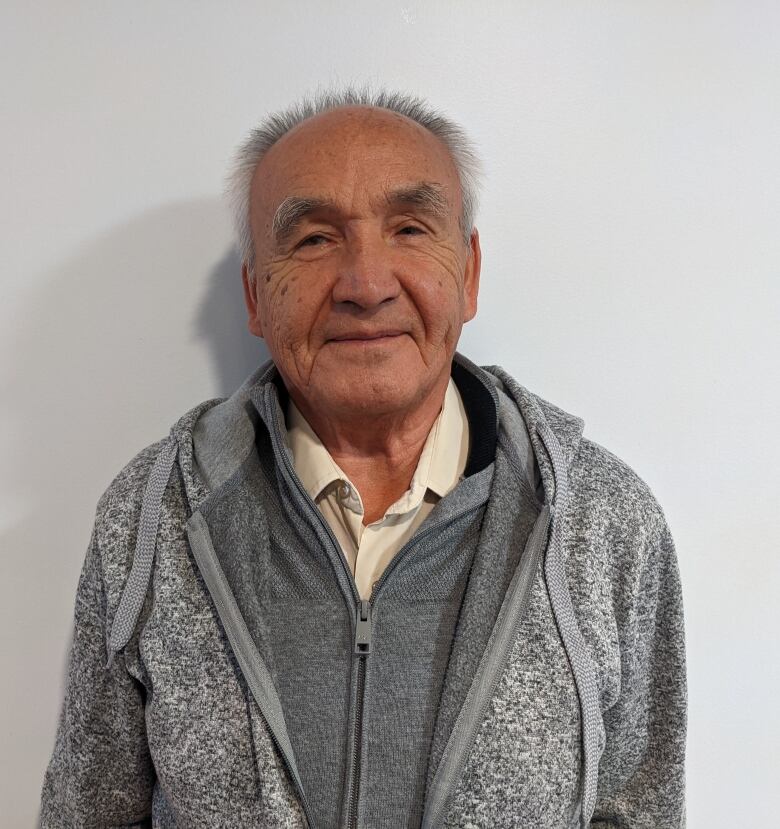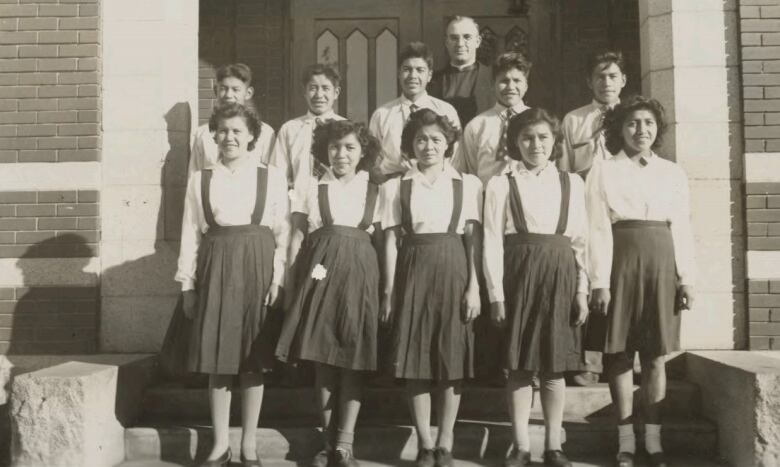B.C. residential school truths were exposed in her 1st book. Her sequel shows there is more to say
Tsqelmucwlc: The Kamloops Indian Residential SchoolResistance and a Reckoning to be released this fall

WARNING: This story contains distressing details.
The Secwepemc term Tsqelmucwlc (pronounced cha-CAL-mux-weel) loosely translates to "we return to being human" and is considered a testament to Indigenous healing and renewal.
The term has also been borrowed for a new bookby author and researcher Celia Haig-Brownthat delves into the experiences of residential school survivors and how their lives continue to be affected by the horrors they faced at the Kamloops Indian Residential School.
Tsqelmucwlc: The Kamloops Indian Residential SchoolResistance and a Reckoning is somewhat of a follow-up to a book Haig-Brown published in 1988, which, at the time, was a bit controversial.
The original story, Resistance and Renewal: Surviving the Indian Residential School, was one of the first books to detail the experiences of residential school survivors. At the time, publishers were skeptical about the book; the truth about the abuse suffered at the so-called schools was not widely accepted by those who were not affected by it.

But then, she met Randy Fred. Fred is a survivor of the Alberni Residential School on Vancouver Islandand knew firsthand the truth to these stories.
A publisher withTillicum Library Imprint, a division ofArsenal Pulp Press, Fred agreed to publish her first book and wrote the foreword something he didagain for Tsqelmucwlc.

But over the past 35 years, Haig-Brown said, things have changed.
"People are more aware of what needs to be talked about."
When the T'kemlups te Secwepemc First Nation first announced its work to identify 215 possible burialsites at the former Kamloops Indian Residential School in May 2021, Fred contacted Haig-Brown to encourage her to take another look at her decades-old text.

Haig-Brown said she was resistant at first and felt there was work being done by Indigenous people through various mediums that were accessible to the general public. However, she said, Fred insisted.
"When an Indigenous person tells me I must do something, I pay attention," she said.
Before writing the book, Haig-Brown sought express consent from the T'kemlups te Secwepemc First Nation.
"I think that there are many researchers who have not taken the time to build long-term relationships with the people with whom they do their work," Haig-Brown said.
"For me, that is an intricate part of particularly as a white woman doing work in an Indigenous community, to make sure that the relationships that I build are worthy of continuing in the eyes of the Indigenous people with whom I'm working."
With their consent, she got to work.

Haig-Brownreconnected with survivors and their families to gain more understanding of what they endured then and how those experiences have continued to affect them.
Some were excited to talk. Others, Haig-Brown said, were reluctant to bring up their painful pasts.
Now, Tsqelmucwlc: The Kamloops Indian Residential SchoolResistance and a Reckoninghas been published by Vancouver-based Arsenal Pulp Press, the company that printed the original versionand will be released through the publisher on Sept. 27.
Fred said he hopes the book contributes to Canada's ongoing journey toward reconciliation.
"People have heard a lot about the truth," Fred said.
"I'm hoping that this new edition will spawn further conversation and help us get on that road to reconciliation."

Support is available for anyone affected by their experience at residential schools or by the latest reports.
A national Indian Residential School Crisis Line has been set up to provide support for former students and those affected. People can access emotional and crisis referral services by calling the 24-hour national crisis line: 1-866-925-4419.
Mental health counselling and crisis support arealso available 24 hours a day, seven days a week through the Hope for Wellness hotline at 1-855-242-3310 or by online chat at www.hopeforwellness.ca.












_(720p).jpg)


 OFFICIAL HD MUSIC VIDEO.jpg)
.jpg)



























































































